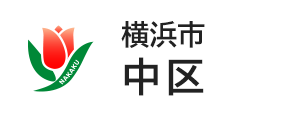現在位置
- Yokohama-shi Top Page
- Naka Ward Top Page
- Introduction of the ward
- Overview of Naka Ward
- The name of Naka Ward and its Ayumi
- The name of the town of Naka Ward and its history (the name of the town of the line)
Last updated on July 16, 2024.
The text is from here.
The name of the town of Naka Ward and its history (the name of the town of the line)
The origin of the town name starting with "Hahifuheho" and the date of installation are posted.
Source: "Yokohama Town Name" City of Yokohama, Civic Affairs Bureau (issued in December 1996), Hamada City Town Name Historical Magazine (issued in 1939), Yokohama City Bulletin
- Hagoromocho
- Hatsunecho
- Hanasaki-cho
- Hanabusacho
- Bandai-cho
- Hisakatacho
- Hinodecho
- Fukushima-cho
- Fukudomimachi
- Fukutomichonakadori
- Fukutomichonishidori
- Fukutomichohigashidori
- Fujimi-machi
- Furochou
- Benten-dori
- Horai-cho
- Hongo-cho
- Honmachi
- Honmoku-cho
- Honmokuarai
- Osatocho, Honmoku
- Honmokusannotani
- Honmokujuuniten
- Honmokuhara
- Honmoku-Futo
- Honmokumakado
- Honmokumanzaka
- Midorigaoka, Honmoku
- Miyahara, Honmoku
- Motomachi, Honmoku
- Honmokuwada
Hagoromocho
Established on April 1, 1889.
A town incorporated into Yokohama City when the municipal system was enforced in 1889. In the old days, it was in Yoshida Nitta, Kuraki-gun, and until 1869 it was called the back of Futami-cho. In August 1869, we established Hagoromocho 1-chome to 3-chome. With the reorganization of the name and lot number of Machikai-cho in 1928, a part of Niimi-cho, Horai-cho and Umegae-cho were merged with Naniwa-cho. The name of the town was "Hagoromo", which is related to Tenma, in connection with Itsukushima-jinja Shrine, which was relocated to Subo Benten. There is a song "Hagoromo". The town has character areas from 1-chome to 3-chome.
Hatsunecho (Hatsunecho)
Established on April 1, 1889.
A town incorporated into Yokohama City when the municipal system was enforced in 1889. In the old days, it was called Ota-mura, Kuraki-gun, and in 1871, it was newly established from Hatsunecho character 1-chome to 4-chome in a place where the townscape was well established. With the enforcement of the street name lot number arrangement in 1928, the area of character 4-chome was transferred to Maesatocho, and each part of Koganecho and Miharucho was transferred. The name of the town was the honorable name. The town has character areas from 1-chome to 3-chome.
Hanasaki-cho, Hanasaki-cho
Established on April 1, 1889.
A town incorporated into Yokohama City when the municipal system was enforced in 1889. In the area of Hanasaki-cho, a coal warehouse was built by reclaiming the coast of Noge Yamashita in 1864 (1864), but the warehouse was demolished from 1870 to 5 years, and in November 1872, Hanasakicho character 1-chome to 12-chome was newly established. With the enforcement of the street name lot number arrangement in 1928, Hanasaki-cho character 1-chome was extended to Midoribashi, Fukujimacho was abolished to Hanasakicho character 2-chome, and Hanasakicho character 7-chome was changed to Hanasakicho character 8-chome and 12-chome was abolished. The name of the town was named after the Sakuragi River, which flowed in front of the town (later renamed Sakuragawa and later reclaimed). The character area of Hanasakicho 1-chome to 3-chome belongs to Naka Ward, and the character area of Hanasakicho 4-chome to 7-chome belongs to Nishi Ward.
Hanabusacho (Hanabusacho)
Established on April 1, 1889.
A town incorporated into Yokohama City when the municipal system was enforced in 1889. In the old days, it was called Ota-mura, Kuraki-gun, and in 1871, Hanabusacho character 1-chome to 4-chome was newly established in a place where the townscape was well established. With the reorganization of the street name and lot number in September 1928, the character 3-chome was transferred to Maesatocho and Nishinakacho, and a part of Kasumicho was incorporated. The name of the town was "Eng" from "Hai Nanko's" Shimizu Yukin Ryufuchi Aritamahide (there is gold in Shimizu and Yufuchi has Yuei). " It is paired with "Shimizu-cho (Abandoned Town)" and "Koganecho".
Bandaicho (Bandaicho)
Established on April 1, 1889.
A town incorporated into Yokohama City when the municipal system was enforced in 1889. In the old days, it was the first swamp in the south of Yoshida Nitta, Kiraki-gun, but in April 1873, it was reclaimed with earth and sand that opened the digging river, and Bandaicho was newly established along with Furochou, Oginamachi, Ogicho, Kotobukicho and Matsukagecho. The name of the town was the honorable name. The town has character areas from 1-chome to 3-chome.
Hisakatacho (Hisakatacho)
Established in November 1873.
Abolished in 1928.
Installed in the Yoshidashinden landfill. It was abolished on September 1, 1928 when the name of Machikaimachi was rearranged.
Current part of 4-chome Isesakicho, Naka-ku, 6-chome Chojamachi, and 1-2-chome Akebonocho.
Hinodecho (Hinodecho)
Established on April 1, 1889.
A town incorporated into Yokohama City when the municipal system was enforced in 1889. This area was reclaimed during the Edo period (1751-1763) and is called Ota-mura, Kuraki-gun. It is the place where Shimoaki Echizen Jinya (Ota Jinya) was set up. After that, it became an army site, and in September 1871, Hinodecho character 1-chome to 3-chome was newly established in a well-established place. With the enforcement of the street name lot number arrangement in 1928, the character 3-chome was abolished. The name of the town was the honorable name. The town has character areas of 1-chome and 2-chome.
Fukushima Town
Established in May 1872.
Abolished in 1928.
Installed in the landfill of Fukushima Chobei. I took the last name and made it the name of the town. It was abolished on September 1, 1928 when the name of Machikaimachi was rearranged. A part of the current 2-chome Hanasakicho, Naka-ku.
Fukudomimachi
Established in June 1870.
Abolished in 1928.
A new building was built in a place where houses in Yoshidashinden were lined up. It is the current location of Higashi-dori, Fukutomi-cho, Naka-ku, and Nishi-dori. On September 1, 1928, when the name of Machikaimachi was rearranged, this was divided into three towns (Fukutomichonakadori, Dotodori, Doseidori) and Fukudomimachi was abolished.
Fukutomichonakadori (Fukutomichonakadori)
Established on September 1, 1928.
A town newly established from each part of Chojamachi, Fukudomimachi character 2-chome and Chojamachi with the enforcement of the street name lot number arrangement in 1928. In the old days, in Yoshida Nitta, Kiraki-gun, Yukichi Nitta and Kashimashinden, in 1870, Fukudomimachi character 1-chome to 3-chome were placed in a well-established place. The name of the street celebrated the auspicious occasion.
Fukutomichonishidori (Fukutomicho Nishidori)
Established on September 1, 1928.
A town newly established from Fukudomimachi character 3-chome with the enforcement of the street name lot number arrangement in 1928. In the old days, in Yoshida Nitta, Kiraki-gun, Yukichi Nitta and Kashimashinden, in 1870, Fukudomimachi character 1-chome to 3-chome were placed in a well-established place. The name of the street celebrated the auspicious occasion.
Fukutomichohigashidori (Fukutomicho Higashi-dori)
Established on September 1, 1928.
A town newly established from each part of Chojamachi, Fukudomimachi character 1-chome and Chojamachi with the enforcement of the street name lot number arrangement in 1928. In the old days, in Yoshida Nitta, Kiraki-gun, Yukichi Nitta and Kashimashinden, in 1870, Fukudomimachi character 1-chome to 3-chome were placed in a well-established place. The name of the street celebrated the auspicious occasion.
Fujimicho (Fujimicho)
Established on April 1, 1889.
A town incorporated into Yokohama City when the municipal system was enforced in 1889. Originally located in Yoshida Nitta, Kiraki-gun, and was newly established from 1-chome to 5-chome in Fujimi-cho around 5th and 6th year of Meiji. In 1882, Fujimi-cho character 3-chome was transferred to Eirakucho and Fujimi-cho character 4-chome and 5-chome were transferred to Shinkane-cho, and Fujimi-cho became character 1-chome and 2-chome. The name of the town was the honorable name.
Furochou
Established on April 1, 1889.
A town incorporated into Yokohama City when the municipal system was enforced in 1889. In April 1873, the swamp of Yoshidashinden was reclaimed, and a new one from Furochou character 1-chome to 3-chome was established. The name of the town was named after Reiyama Horai, which is said to be the land of "Immortality". Koizumi Yakumo introduced Furochou as "the Street Everlasting." in "At the Market of the Dead." The town has character areas from 1-chome to 3-chome.
Benten-dori
Established on April 1, 1889.
A town incorporated into Yokohama City when the municipal system was enforced in 1889. In the old days, it was called Yokohama-mura, Kuraki-gun, and when the port opened Yokohama in 1859 (1859), it was newly established from 2-chome to 5-chome Benten-dori. In April 1871, the way of counting the chome was changed, and starting from the Kanagawa Prefectural Office, the characters 1-chome to 6-chome were placed. The name of the town is named because it is a road that runs straight to Suju Bentensha. The town has character areas from 1-chome to 6-chome.
Horaicho (Horaicho)
Established on April 1, 1889.
A town incorporated into Yokohama City when the municipal system was enforced in 1889. In 1873, Horai-cho character 1-chome to 4-chome was newly established in the landfill behind Hagoromo-cho. With the reorganization of the street name and lot numbers in 1928, Horaicho character 4-chome was put into the fifth Chojamachi character, and a part of Hagoromocho character 1-chome and 2-chome was incorporated. The name of the town was named after Reiyama Horai, the land of immortality. The town has character areas from 1-chome to 3-chome.
Hongo-cho
Established on September 1, 1928.
The town was newly established in 1928 from a part of Honmoku-cho. Place Hongo-cho character 1-chome and 2-chome, and then place Hongo-cho character 3-chome in 1933. In the old days, it was called Honmoku Hongo Village, Kuraki-gun. When the municipal system was enacted in 1889, it merged with Kitakata Village to form Honmoku Village, and became Honmokucho when transferred to Yokohama City in 1901. The name of the town was the old village. According to the place name study, "Hongo" means "Hongo" for "Edago, Dego, Idemura". The town has character areas from 1-chome to 3-chome.
Honmachi (Honcho)
Established on April 1, 1889.
A town incorporated into Yokohama City when the municipal system was enforced in 1889. In the old days, it was called Yokohama-mura, Kuraki-gun, and when the port opened Yokohama on June 2, 1859 (1859), Honmachi character 1-chome to 5-chome was newly established. In April 1871, the number of chome was changed starting from the Kanagawa Prefectural Office, and characters 1-chome to 6-chome were placed. The street name was named in the middle of Yokohama town. The town has character areas from 1-chome to 6-chome.
Honmokucho, Honmokucho
Established on April 1, 1901.
A town newly established from Hongo, Honmoku-mura, Kuraki-gun, when transferred to Yokohama City in 1901. In the old days, it was called Honmoku Hongo Village, Kuraki-gun, and when the municipal system was enforced in 1889, it became Honmoku Village Oaza Honmoku Hongo. With the reorganization of the street name and lot number in 1933, the old character name was abolished and the Honmokucho character 1-chome to 4-chome was set up, and Honmokuarai, Honmokumanzaka, Honmokumidorigaoka, Honmokumotomachi, Honmoku Osatomachi, Honmokusannotani, Honmokusannotani, MaHonmokuwada. There is a record of "Honmaki-go" in "Yokohama Document" in "Ujiyasu Hojo Banning (1545, 1545)". "Honmaki" has a record written as "Honme", and it is considered that there is no relationship with the ranch from the topography. The town has character areas of 1-chome and 2-chome.
Honmokuarai (honmokuarai)
Established on April 1, 1933.
A town newly established from each part of Honmaki-cho and Negishi-cho with the enforcement of the street name lot number arrangement in 1933. In the old days, it was called Honmoku Hongo Village, Kuraki-gun. When the municipal system was enacted in 1889, it merged with Kitakata Village to form Honmoku Village, and became Honmokucho when transferred to Yokohama City in 1901. The name of the street was written. According to the place name study, "Arai" means "new house, new village".
Honmoku Osato-cho
Established on April 1, 1933.
The town was newly established in 1933 from a part of Honmoku-cho. In the old days, it was called Honmoku Hongo Village, Kuraki-gun, and when the municipal system was enforced in 1889, it became Honmokucho when transferred to Yokohama City in 1901. The street names were "large" and "sato" from the character names "Otando" and "Shimosato".
Honmokusannotani (honmokusannotani)
Established on April 1, 1933.
The town was newly established in 1933 from a part of Honmoku-cho. In the old days, it was called Honmoku Hongo Village, Kuraki-gun, and when the municipal system was enforced in 1889, it became Honmokucho when transferred to Yokohama City in 1901. The name of the street was written. Honmoku Village has Tando of Kazuyuki Valley, Ninotani, and Sannotani. In addition, Sankeien's "kei" is the name of the founder, Tomitaro Hara, which means "Sannotani".
Honmokuju niten
Established on April 1, 1933.
The town was newly established in 1933 from a part of Honmoku-cho. In the old days, it was called Honmoku Hongo Village, Kuraki-gun, and when the municipal system was enforced in 1889, it became Honmokucho when transferred to Yokohama City in 1901. On July 21, 1986, the display of houses was enforced, and each part of Kominato-cho and Nishikicho was incorporated. The name of the street was written. The name of the town, "Twelve heavens," was named after the twelve heavens (Honmaki Shrine), the guardian of Honmoku Village, which worshiped it.
Honmokuhara (Homokuhara)
Established on July 21, 1986.
A town newly established from each part of Nishikicho, Honmokusannotani, Honmoku 12ten, Honmoku-cho, Honmoku Motomachi and Honmokuwada following the enforcement of the residence label in 1986. The name of the town was "Honmaki" in the character name.
Honmokufuto
Established on August 31, 1968.
A town newly established following the landfill at Nishikicho in 1968. After that, dozens of landfills are incorporated into the current town area. The name of the town was named because this landfill was called "Honmaki Futo".
Honmokumakado (honmokumakado)
Established on September 26, 1994.
A town newly established from each part of the real Minoya and Mamon-cho with the enforcement of the house labeling in 1994. The name of the town was "Honmaki" in the previous town name "Mamoncho" at the request of the local area. Mamon-cho was newly established from each part of Honmaki-cho and Negishimachi with the reorganization of Machikai-cho name lot numbers in 1933, and the name of Hongo-mura was taken. Kunio Yanagida says "macad" may come from two words of Ainu language's Maca (open, open) and To (lake water). According to other place name studies, "macad" means "steep slopes such as cliffs."
Honmokumanzaka (honmokumanzaka)
Established on April 1, 1933.
The town was newly established in 1933 from a part of Honmoku-cho. In the old days, it was called Honmoku Hongo Village, Kuraki-gun, and when the municipal system was enforced in 1889, it became Honmokucho when transferred to Yokohama City in 1901. The name of the street was written. According to the place name study, "Manzaka" means "Tando of the cliff".
Honmoku Midorigaoka (honmoku Midorigaoka)
Established on April 1, 1933.
A town newly established from each part of Honmaki-cho and Negishi-cho with the enforcement of the street name lot number arrangement in 1933. In the old days, it was called Honmoku Hongo Village, Kuraki-gun. When the municipal system was enacted in 1889, it merged with Kitakata Village to form Honmoku Village, and became Honmokucho when transferred to Yokohama City in 1901. The name of the town was named after the area because there are many hills in this area and it is a place with green leaves.
Honmoku Miyahara (Honmokuyabara)
Established on July 21, 1986.
A town newly established from each part of Kominato Town, Honmoku Juten, and Honmoku Town with the enforcement of the house labeling in 1986. The name of the town was "Honmaki" in the character name.
Honmoku Motomachi (Honmokumotomachi)
Established on April 1, 1933.
The town was newly established in 1933 from a part of Honmoku-cho. In the old days, it was called Honmoku Hongo Village, Kuraki-gun, and when the municipal system was enforced in 1889, it became Honmokucho when transferred to Yokohama City in 1901. Reclaimed land was incorporated four times in the 1940s. The name of the town was "Motomachi" because this area was the center of Honmoku Hongo Village.
Honmokuwada
Established on April 1, 1933.
The town was newly established in 1933 from a part of Honmoku-cho. In the old days, it was called Honmoku Hongo Village, Kuraki-gun, and when the municipal system was enforced in 1889, it became Honmokucho when transferred to Yokohama City in 1901. With the enforcement of the residence indication on July 21, 1986, each part of Honmokuarai, Honmokusannotani, Honmoku-cho, and Mamon-cho was incorporated. The name of the street was written. According to the place name study, "Wada" is "a slightly broad, round flat ground such as a curved part of a river", and it does not need to be a field.
Inquiries to this page
Naka Ward General Affairs Department Ward Administration Promotion Division
Phone: 045-224-8123
Phone: 045-224-8123
Fax: 045-224-8214
E-Mail address na-kusei@city.yokohama.lg.jp
Page ID: 425-810-110












